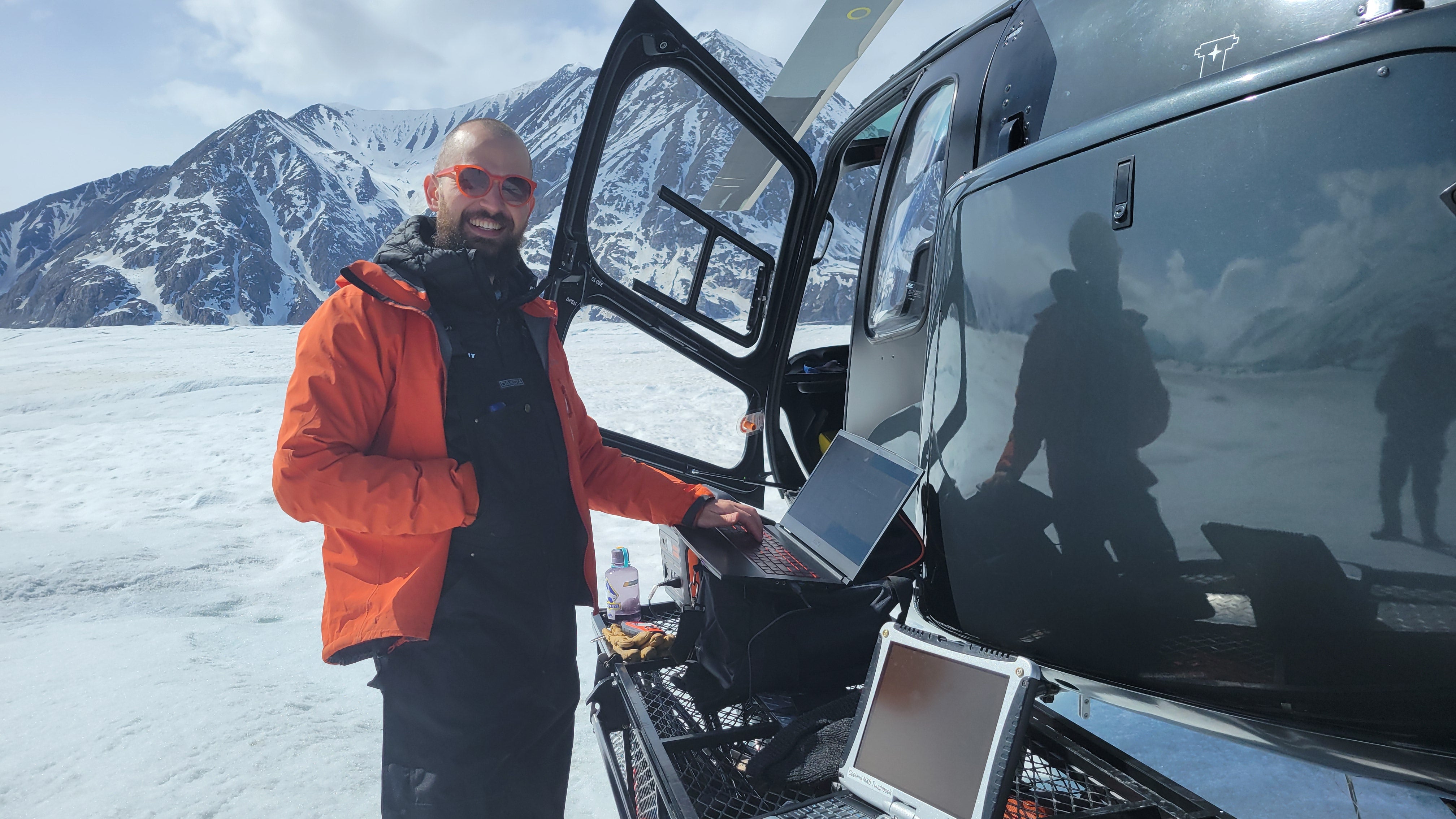Exploring the future of frozen water
Understanding ice dynamics in the Yukon’s St. Elias Mountains to prepare for sea level rise and protect water resources
As the world focuses on glacier preservation this UN World Water Day, researchers at the University of Waterloo are exploring the glaciers of the Yukon’s St. Elias Mountains. These massive bodies of ice, part of the planet’s highest coastal mountain range, are more than just stunning landscapes—they are a vital source of Canada’s frozen water and key to understanding sea level rise and future water security.
The St. Elias Mountains hold approximately 32,100 square kilometers of glaciated terrain, contributing four per cent of global sea level rise between 2006 and 2016. Despite their importance, the glaciers’ internal dynamics and total ice volume remain largely unknown due to their remote location and extreme topography. A groundbreaking project, led by Water Institute member Dr. Christine Dow and PhD candidate Peter Wray at Waterloo, is set to change this.
“In 2023 and 2024, we successfully surveyed six of the region’s ten largest glaciers using new AirIPR technology, a helicopter-borne radar system capable of penetrating up to 1 kilometer of ice,” says Wray. “This technology allows us to map glacier bed topography at an unprecedented scale. By the end of our 2025 field season, we’ll be the first to have a complete picture of the region’s ice topography, volume and hopefully, glacier dynamics.”

Photo: Peter Wray near Lowell Glacier.
This research marks a milestone in Canadian glaciology. Unlike temperate glaciers in Western Canada, which are rapidly vanishing, the melting of the St. Elias glaciers will continue to influence global sea level rise and local ecosystems well after 2100. Understanding their behaviour requires accurate, high-resolution models of their geometry and bedrock interface. The AirIPR system has provided precisely that enabling researchers to uncover the secrets of surge-type glaciers—those that alternate between years of slow movement and sudden, dramatic advances.
Peter Wray near Lowell Glacier ready to help the helicopter pilot launch the radar system and start a survey.
